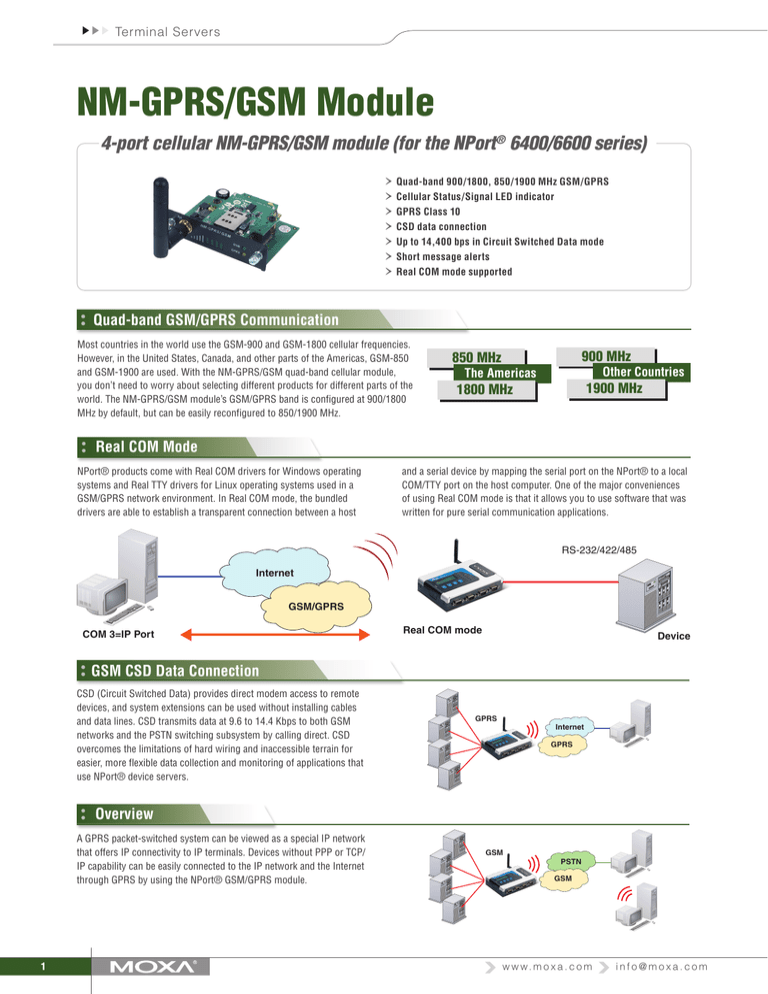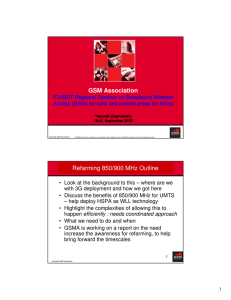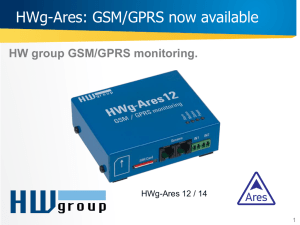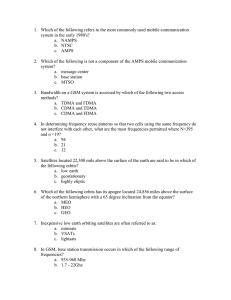
Terminal Servers
NM-GPRS/GSM Module
4-port cellular NM-GPRS/GSM module (for the NPort® 6400/6600 series)
››Quad-band 900/1800, 850/1900 MHz GSM/GPRS
››Cellular Status/Signal LED indicator
››GPRS Class 10
››CSD data connection
››Up to 14,400 bps in Circuit Switched Data mode
››Short message alerts
››Real COM mode supported
Quad-band GSM/GPRS Communication
Most countries in the world use the GSM-900 and GSM-1800 cellular frequencies.
However, in the United States, Canada, and other parts of the Americas, GSM-850
and GSM-1900 are used. With the NM-GPRS/GSM quad-band cellular module,
you don’t need to worry about selecting different products for different parts of the
world. The NM-GPRS/GSM module’s GSM/GPRS band is configured at 900/1800
MHz by default, but can be easily reconfigured to 850/1900 MHz.
900 MHz
850 MHz
Other Countries
The Americas
1900 MHz
1800 MHz
Real COM Mode
NPort® products come with Real COM drivers for Windows operating
systems and Real TTY drivers for Linux operating systems used in a
GSM/GPRS network environment. In Real COM mode, the bundled
drivers are able to establish a transparent connection between a host
and a serial device by mapping the serial port on the NPort® to a local
COM/TTY port on the host computer. One of the major conveniences
of using Real COM mode is that it allows you to use software that was
written for pure serial communication applications.
RS-232/422/485
Internet
GSM/GPRS
COM 3=IP Port
Real COM mode
Device
GSM CSD Data Connection
CSD (Circuit Switched Data) provides direct modem access to remote
devices, and system extensions can be used without installing cables
and data lines. CSD transmits data at 9.6 to 14.4 Kbps to both GSM
networks and the PSTN switching subsystem by calling direct. CSD
overcomes the limitations of hard wiring and inaccessible terrain for
easier, more flexible data collection and monitoring of applications that
use NPort® device servers.
GPRS
Internet
GPRS
Overview
A GPRS packet-switched system can be viewed as a special IP network
that offers IP connectivity to IP terminals. Devices without PPP or TCP/
IP capability can be easily connected to the IP network and the Internet
through GPRS by using the NPort® GSM/GPRS module.
1
GSM
PSTN
GSM
w w w. m o x a . c o m
info@moxa.com
Terminal Servers
GSM/GPRS Backup Application
The NM-GPRS/GSM module can be used to provide the NPort® with
automatic backup capability. When the backup function is enabled,
the NPort® will check the remote host’s connection on the Ethernet
side after power-on. If a connection failure occurs, data from the serial
Remote Host
device will be sent out through the GSM/GPRS network. When the
remote host on the Ethernet side returns to normal status, data will
again be sent through the Ethernet connection. The NPort® backup
function makes your data transmission safer and more reliable.
Remote Host
Internet
PSTN
GSM
GPRS
Ethernet
Ethemet
SMS Alerts by Event
The NM-GPRS/GSM module provides the NPort® device server
with an SMS alert function that support up to 4 phone numbers. As
shown in the table, there are four event categories (System, Network,
Configure, and Serial Port), and a total of eight different options that
can be configured.
System Events
Network Events
Configure Events
Serial Port Events
Cold start
Ethernet link
down
Console login
authentication failure
DCD changed
Warm start
–
Ethernet IP changed
DSR changed
–
–
Password changed
–
4
Ethemet
4
Alert
4
4
Appearance
Cellular Status and Signal Strength LEDs
GSM
Lights up when the GSM is connected
GPRS
Lights up when the GPRS is connected
Signal Strength
Number of lit LEDs indicates the signal
strength
Specifications
Cellular Interface
Standards: GSM and GPRS
Band Options: 850/900 MHz and 1800/1900 MHz quad-band
GPRS Multi-slot Class: Class 10
GPRS Terminal Device Class: Class B
GPRS Coding Schemes: CS1 to CS4
CSD Data Transmission Rate: Up to 14,400 bps
SIM Control: Point-to-point Text/PDU, Mobile Originated (MO) and
Mobile Terminated (MT Cell Broadcast is in accordance with GSM
07.05)
2
Antenna: SMA female type connecter, 50 W impedance and 1 dBm
peak gain
Operating Temperature: 0 to 55°C (32 to 131°F)
Storage Temperature: -20 to 70°C (-4 to 158°F)
Ambient Relative Humidity: 5 to 95% (non-condensing)
© Moxa Inc. All Rights Reserved. Updated Mar. 14, 2011. Specifications subject to change without notice. Please visit our website for the most up-to-date product information.




